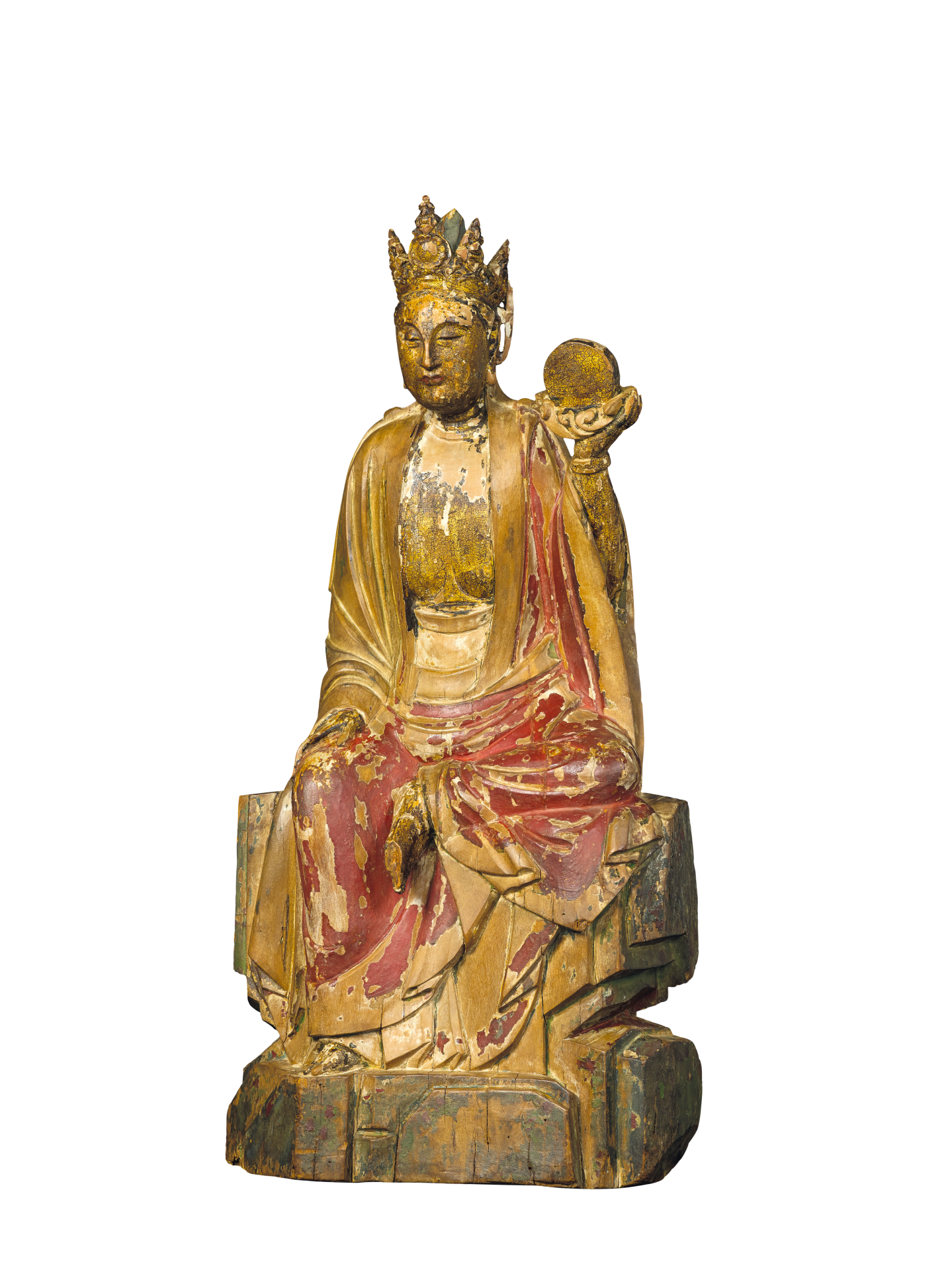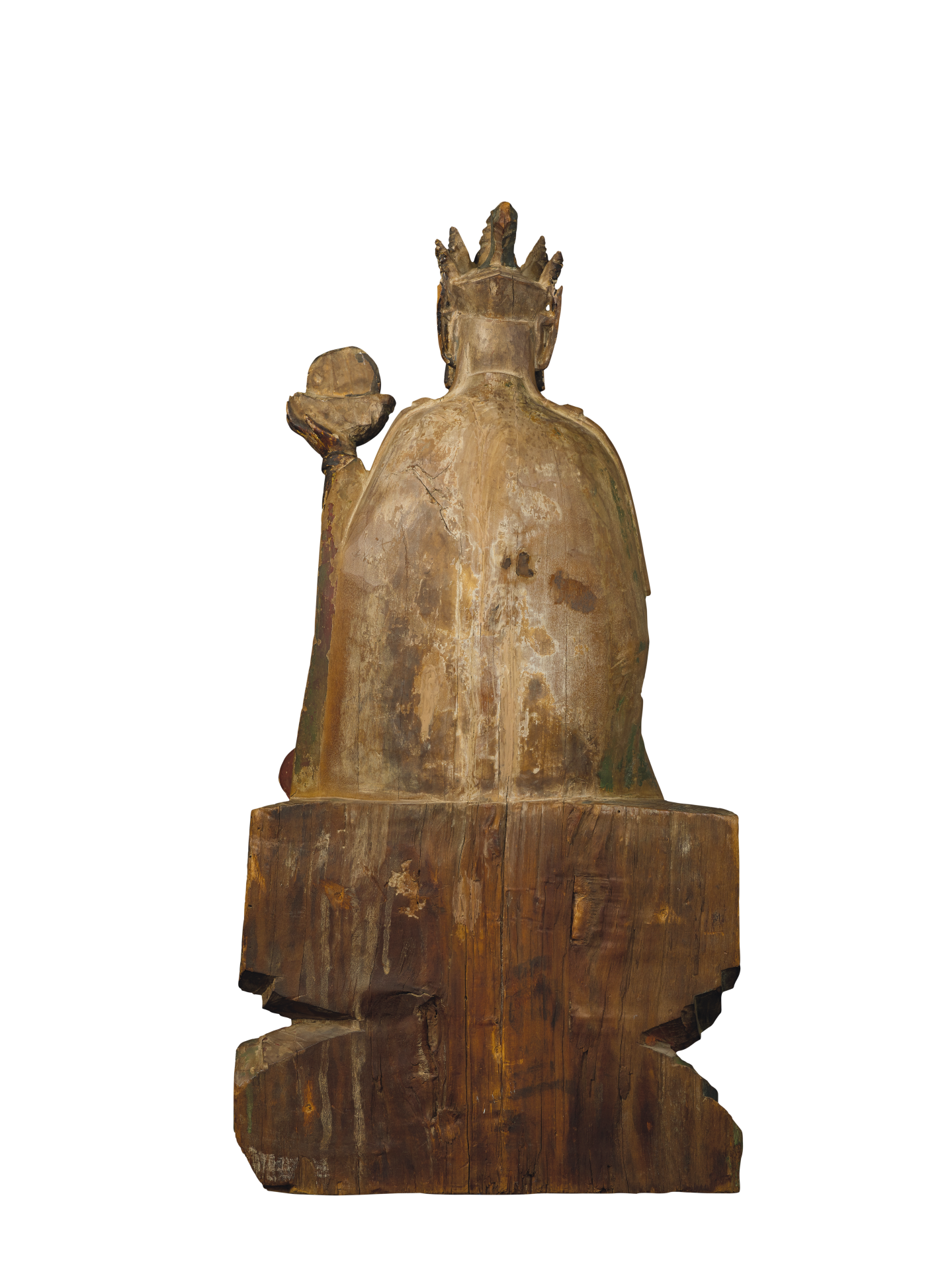Seated Sūryaprabha Bodhisattva
Sūryaprabha or Bodhisattva Sunlight is the leading Bodhisattva of the Eastern World of Pure Vaiḍūrya. He is also the acolyte often appearing on Bhaiṣajyaguru’s (Medicine Buddha) left, while the acolyte on the right is Bodhisattva Moonlight. Together, they form the grouping known as the Bhaiṣajyaguru Triad or the Holy Triad of the East. Sunlight is a symbol of brightness and wisdom. Out of compassion, Sūryaprabha vowed to abide in deep meditation (samādhi) so as to shine through the sentient world in the Dharma Realm and shatter the darkness of life and death in the way sunlight shines through the world, hence the name Sūryaprabha (Sunlight).
This statue carved from wood is decorated with polychrome painting; the face and body in golden colour, the clothing in red and the rocky base in grass green. Although the pigments have largely come off, the original resplendence can still be imagined. The Bodhisattva wears a tall topknot enclosed by a five-leaf crown with ribbons gliding down the forearms. He has an ‘goose-egg’ shaped face with delicately carved facial features and a rather solemn countenance.
He wears a cinnabar red kāṣāya over an undergarment (saṃkakṣikā). He is seated in ‘relaxation posture’ (lalitāsana) upon a rock, with the right palm touching the right knee and the left hand supporting the sun disc at shoulder level. He has a relatively short neck, narrow shoulders and an impressive physique with a flat solid chest. The U-shaped chest line above the belly suggests sagging muscles. The drapery is fluidly carved in high relief with vividly and spontaneously twisted folds. Not only have the ridged folds accurately revealed the shape of the body, they also form a contrast with the rigid cutting marks and block structure of the rocky base, attesting to the carver’s superb skill in treating object surfaces of different textures.

